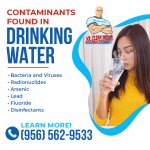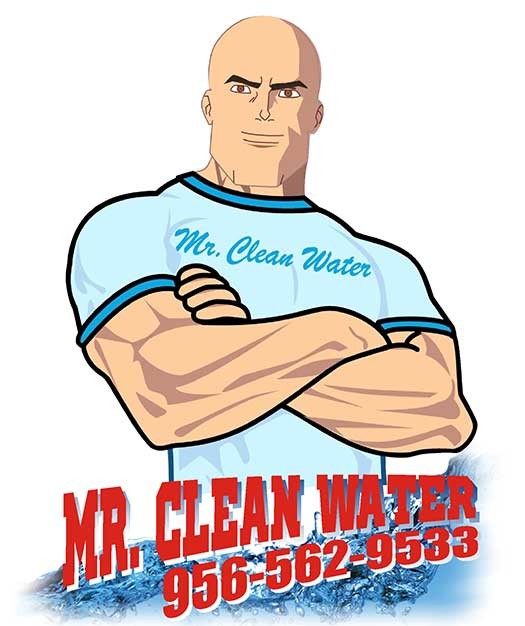On average an American uses 80 to 100 gallons of water every day. This includes drinking water and water used for washing and cleaning, gardening, and waste disposal. Households get water from a public water supply system or a private well. The quality of drinking water is very crucial as it affects health. The United States Environmental Protection Agency has established drinking water standards. There are standards set for 90 contaminants in drinking water. However, drinking water is not entirely contaminant-free, and water can get contaminated at different points in the supply system. This is why many homes get a water filtration system.

Mr. Clean Water is a South Texas-based home water treatment and filtration company. Here they provide information on the contaminants found in drinking water.
-
Bacteria and Viruses
Several microbes can be found in water. Total coliform bacteria are common but generally not harmful. They can indicate a problem with the pipes or water treatment system, which means that the water can be contaminated with disease-causing germs. Fecal coliform and E. coli indicate contamination with human or animal waste. These can cause nausea, diarrhea, cramps, headaches, etc.
Cryptosporidium is a parasite that enters through animal waste and sewage. It is tolerant to disinfection with chlorine. It causes cryptosporidiosis, which is a mild gastrointestinal disease that can affect immunocompromised people severely or fatally. Giardia lamblia is a similar parasite with similar effects.
Water treatment can remove pathogens with techniques like chlorination, UV light, ultrafiltration, and distillation that eliminate 99,9-99.9999% of pathogens.
-
Radionuclides
There can be minerals that are radioactive and emit radiation. Based on the type of radiation emitted, there are alpha emitters and beta/photon emitters. Very small quantities of radium are permitted in drinking water by the EPA. If radium exceeds the permitted levels, it can increase the risk of cancer, kidney damage, and birth defects. Radon gas dissolved in underground water can also increase the risk of cancer. Radium can be removed by cation exchange softening, reverse osmosis, and distillation.
-
Arsenic
If the toxic heavy metal arsenic exceeds the EPA standards in drinking water, it can cause serious problems immediately or over the long term. It can damage the bladder, kidneys, lungs, heart, liver, and peripheral and central nervous system. It can also lead to cancer. Arsenic can leach from natural deposits or be a pollutant from petroleum production, wood industry, coal power plants, etc. It can be treated by iron oxide/hydroxides, distillation, anion exchange, or reverse osmosis.
-
Lead
Lead usually enters the water from plumbing in older buildings, lead-containing solder, and brass fittings. Industrial processes, mining, and smelting can be a source of contamination. It causes more health risks in children and pregnant women. Children can have intellectual impairment, hearing defects, and decreased growth due to lead contamination. There can also be damage to the brain, central nervous system, kidneys, and bone marrow. Treatment methods include reverse osmosis, strong acid cation exchange, and distillation.
-
Fluoride
One milligram per liter of fluoride is added to public drinking water to reduce tooth decay. But if exposed to more than 2mg/L, children can develop mottled or discolored teeth. If there are higher levels of fluoride in drinking water for years, it can cause a severe bone disorder called fluorosis, characterized by increased density and hardness and fragile bones. Fluoride is eliminated by reverse osmosis, strong base anion exchange, activated alumina adsorption media, and distillation.
-
Disinfectants
Chlorine and ammonia are usually used to treat water. Chlorine and chloramines ( formed when chlorine and ammonia are added together), if exceeding EPA standards, can irritate the eyes, nose, and stomach. Chloramines are removed by treatment with activated carbon and catalytic activated carbon. Ammonia can be eliminated by distillation or zeolites.

There are many more contaminants like pesticides, minerals, plastic, oils, uranium, etc from natural or man-made sources. Homeowners can choose a water purification system based on their requirements and contaminants present. The CCR or annual drinking water quality report can give information on water quality based on EPA standards. In South Texas, one of the leading home water purification services, Mr. Clean Water provides the best home water filtration systems. For professional and top-quality installation and service of water purification systems, you can contact them at (956) 562-9533.

























